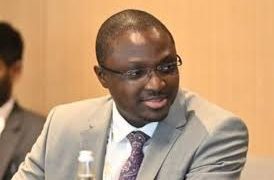What Does the Latest Ghana Debt Deal Mean?
Ghana’s parliament has approved a $2.8bn debt restructuring framework with 25 creditor countries, including China and France. This move is designed to reduce the debt-to-GDP ratio to 55% and cut debt-service-to-revenue below 18% by 2028. It’s the clearest sign yet that the John Mahama administration is trying to move beyond the country’s 2022 default on most of its $30bn in external debt.
Accra’s ratification is a milestone, but the hardest work may still lie ahead. We answer five key questions to unpack what the latest deal entails and whether Ghana can implement crucial reforms.
1. Is this deal final?
Not quite. This agreement is only a framework – individual bilateral deals still need to be signed. Each creditor country must ratify the deal in its domestic process, which can take time. Ghana’s finance ministry will have to navigate these formalities in parallel, while keeping markets reassured that the overall deal is on track.
2. What about private creditors?
Progress here is uneven. Ghana clinched a deal with the majority of Eurobond holders last year, agreeing to a 37% haircut on $13bn of debt – the biggest such reduction on the continent. That deal delivered around $4.4bn in cash-flow relief over two years and improved market sentiment.
But some Eurobond holders are still holding out. Worse, negotiations with other ‘commercial’ creditors have made little headway. Institutions such as Afreximbank have resisted being grouped as commercial creditors, arguing for more favourable treatment. Meanwhile, contractors with large unpaid invoices are pushing for bespoke deals outside the official framework.
Domestic creditors are another headache. Power producers, many with foreign ownership, supply essential electricity and hold substantial arrears. They have the clout to resist government pressure – after all, Ghana can ill afford power cuts. Bringing these players into any comprehensive debt solution will be politically and practically fraught.
3. How does the IMF fit in?
Ghana is two years into a $3bn extended credit facility with the International Monetary Fund (IMF). The fund’s support is crucial – both financially and as a stamp of approval for investors. But it comes with strings attached, such as fiscal consolidation, transparency in debt management and structural reforms to reduce the risk of another crisis.
However, Washington’s politics could complicate future IMF disbursements. US lawmakers have demanded Ghana prioritise repayments to American firms, which are owed about $251m. Failure to address these arrears could stall funding, given America’s influence at the IMF.
4. How did Ghana end up here?
A toxic mix of external shocks and internal weaknesses knocked the country’s economy hard. The Covid-19 pandemic eroded revenues. The war in Ukraine and rising global interest rates pushed up borrowing costs. The cedi collapsed, inflation soared past 50% and debt service became unmanageable. Ghana suspended most external debt payments in December 2022.
Meanwhile, domestic borrowing soared. By mid-2023, total public debt had reached more than $52bn, with nearly half owed domestically. The government’s reliance on expensive short-term treasury bills to plug budget holes risks undermining any gains from external restructuring.
5. What happens next?
The crisis is far from over. Inflation has fallen back to around 23% and quarterly GDP growth touched 6.9% in mid-2024. Yet annual growth remains sluggish, poverty is widespread and the cost of living remains high.
Without credible reforms, Ghana could slip back into crisis, leaving its hard-won restructuring gains looking fragile
“Ghana’s patchwork of deals to restructure its unsustainable debt is proceeding steadily and without many surprises,” says Bright Simons, vice president of Ghanaian think tank IMANI. “Each milestone is announced with pomp and aplomb to signal to investors that the country has truly turned the corner and to encourage less enthusiastic creditors to get with the programme.”
He adds: “It seems to be working so far, as confidence has been on an upward curve. Nonetheless, most of the benefits of the debt rework have already been priced into the recovery sentiment. For the recovery to consolidate, other narratives about structural reform need to jump to the fore.”
The government must finalise talks with private creditors, sign and ratify bilateral agreements, and stay the course on IMF-backed reforms. It also needs to resolve its dispute with Afreximbank over $768m in loans – a case that could set an important precedent for how African regional lenders are treated in future restructurings.
The risk is that, without credible reforms, Ghana could slip back into crisis, leaving its hard-won restructuring gains looking fragile.








